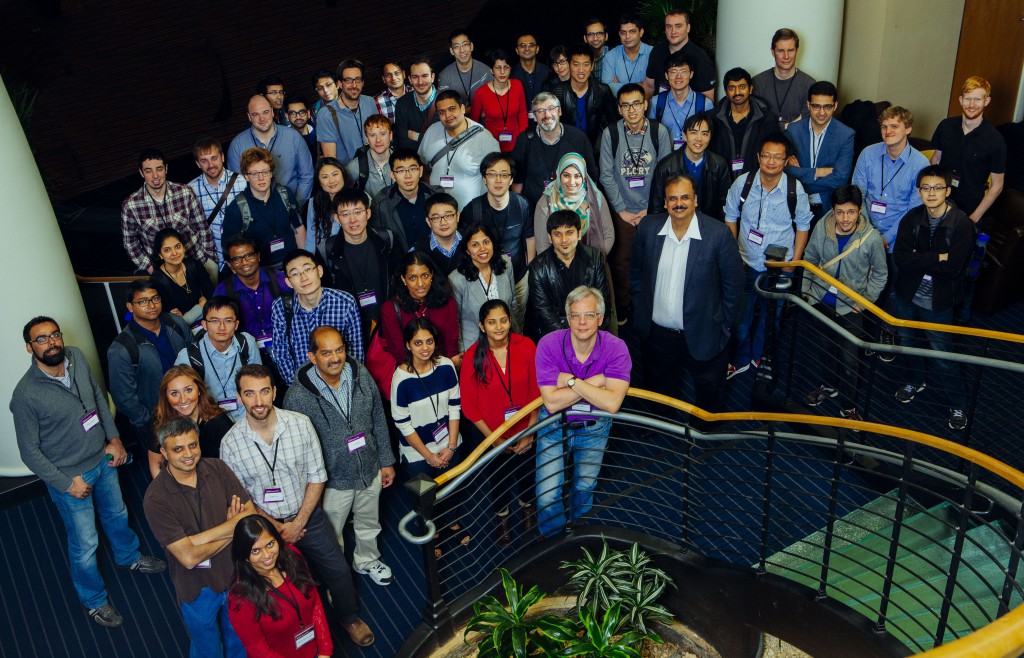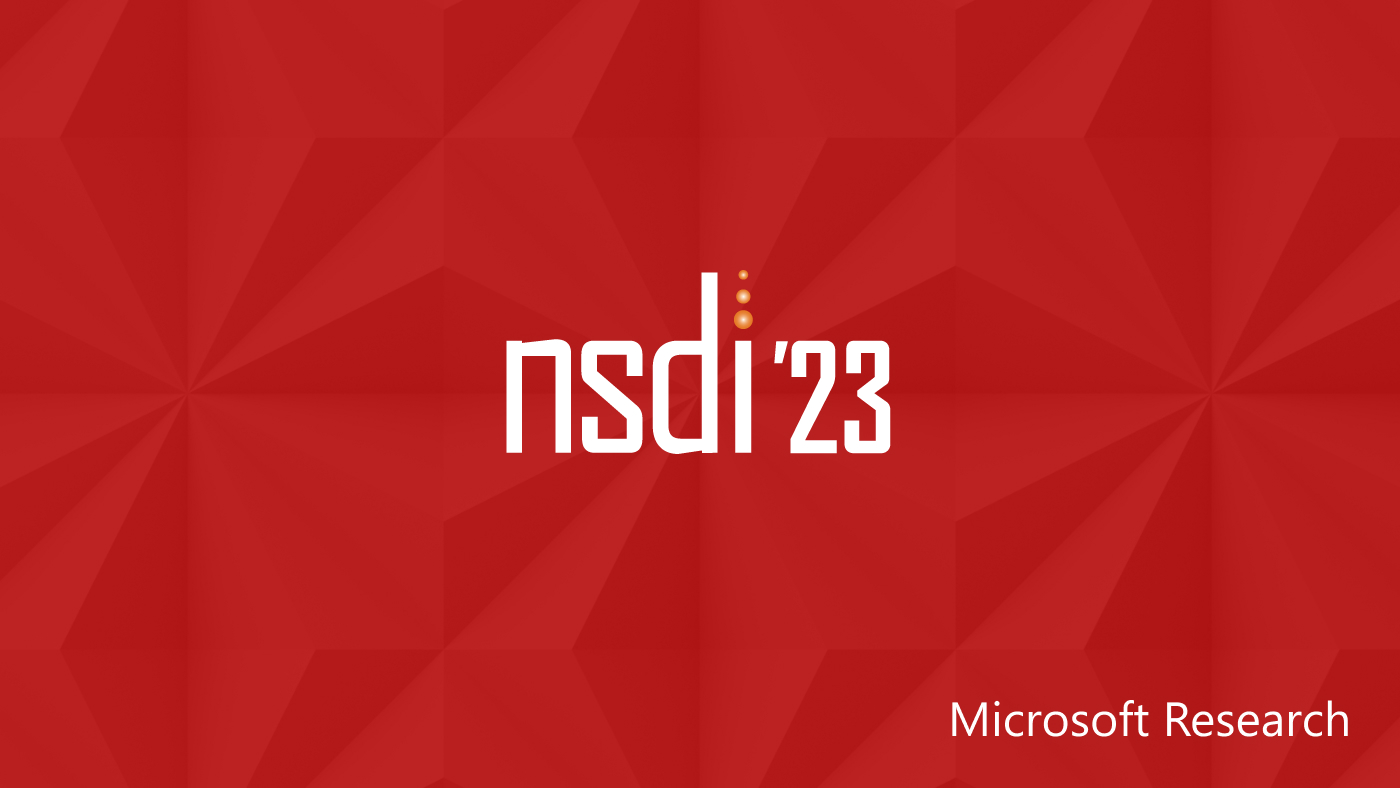
By Vani Mandava, Senior Program Manager; Victor Bahl, Distinguished Scientist; and Alec Wolman, Principal Researcher, all from Microsoft Research
In a two-day summit in February that was as much mind meld as conference, 45 PhD candidates from the top computer science departments in the United States met with a group of Microsoft researchers and engineers for the Student Summit on Mobility, Systems, and Networking (opens in new tab). Fourth- and fifth-year grad students were nominated by their advisors to participate in the event, held in Petaluma, CA.
The motivation for the summit was simple: Give brilliant students and senior Microsoft researchers an opportunity to spark. The best technologies, which require years of research and development, often start with ideas that were the result of great minds coming together. Not only does research require constant exposure to new thinking, but researchers themselves thrive when they’re surrounded by fresh ideas and perspectives. Bringing together top-notch computer science PhD student researchers who are about to embark on their careers with researchers and engineers who have proven research and technology impact, clearly seemed the right thing to do.
Microsoft research podcast
Collaborators: Silica in space with Richard Black and Dexter Greene
College freshman Dexter Greene and Microsoft research manager Richard Black discuss how technology that stores data in glass is supporting students as they expand earlier efforts to communicate what it means to be human to extraterrestrials.
Big ideas
During the summit, students presented their work to an ideal audience—their academic peers and a small group of Corporate Vice President-nominated engineers and researchers from Microsoft’s worldwide labs. In turn, Microsoft participants had the opportunity to weigh in on some of the important research that’s being done in universities, as well as a chance to meet the people who might one day be their collaborators and colleagues in the field.

Student research, delivered as a combination of short talks and poster presentations, made up a significant portion of the summit. Senior engineering leaders from Microsoft gave talks about the systems problems they’re working on, hoping to give students a sense of the industry challenges and opportunities they’re facing. To learn more about their perspective, take a look at the presentations:
- Johannes Gehrke, Distinguished Engineer, Applications and Services Group: Big Data Challenges in a Product Group (opens in new tab)
- Vijay Narayanan, Partner Director of Software Engineering, Machine Learning & Data Science, Cloud and Enterprise: The Intelligent Cloud (opens in new tab)
- Abolade Gbadegesin, Partner Software Engineer, Operating Systems Group: Continuum: evolving the mobile experience (opens in new tab)
- Sriram Rao, Partner Scientist Manager, Cloud and Information Services Lab, Cloud and Enterprise: Building a Datacenter Scale Analytics Platform (opens in new tab)
- Deepak Bansal, Partner Software Engineering Manager: Engineering SDN for Scale (opens in new tab)
Real problems
One of the features of the summit was an exercise in which working groups met in break-out sessions to direct their brain power at some real-world areas of research that challenge the industry. Student participants were given five working groups to choose from in advance of the event:
- Cloud and Big Data Systems
- Mobile and Wearable Systems
- Networking
- Wireless Systems
- Internet-of-Things
On Day 2 of the summit, the groups met—each facilitated by a senior researcher—and later in the day, presented their thinking to the other attendees for feedback and discussion. The working group write-ups are slated for publication in one or both of ACM SIGMOBILE’s GetMobile (opens in new tab) or SIGCOMM’s Computing Communications Review (opens in new tab).
Kudos
No conference is complete without a little friendly competition. A panel of judges from Microsoft selected the “best-of” for recognition:
Best Presentation: Finger I/O Using Active Sonar for fine-grained finger tracking (opens in new tab), Rajalakshmi Nandakumar, University of Washington
Best Poster: Scalable Network Forensics, Matthias Valentin, University of California, Berkeley
Honorable Mentions:
- Declarative Network Path Queries (opens in new tab), Srinivas Narayana, Princeton University
- Minimizing Faulty Executions of Distributed Systems, Colin Scott, University of California, Berkeley
- CAredroid: Adaptation Framework for Context-Aware Mobile Applications on Smart Phones, Salma Elmalaki, University of California, Los Angeles

Hidden benefit
We asked for and received great participant feedback, in which it was clear that students enjoyed this cerebral research event and would highly recommend it to their peers. More than one student pointed out that the value of the conference wasn’t limited to achieving deeper understanding of the subject matter or getting feedback from peers—although that certainly happened. For some, the informal conversations that took place at every opportunity might have opened up entirely new lines of inquiry. We know that it’s not a stretch to think that those new lines of inquiry might very well take research to entirely new places.
“I felt like it was a prime opportunity to connect with our contemporaries that will someday
be alongside us in academia or industry.” –Alex Mariakakis, University of Washington





